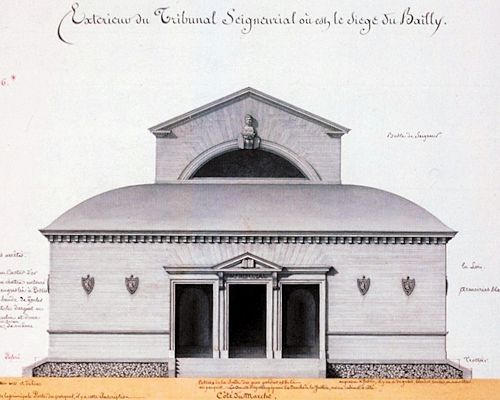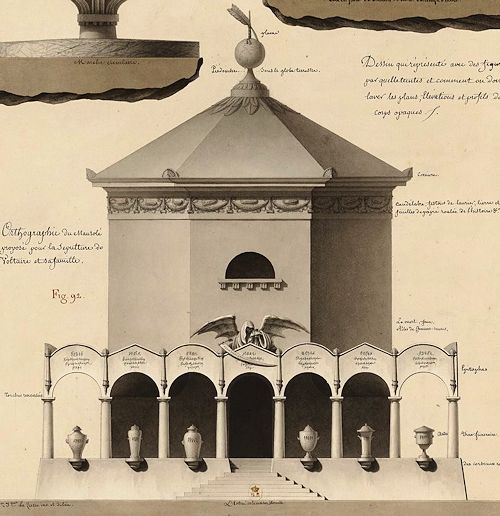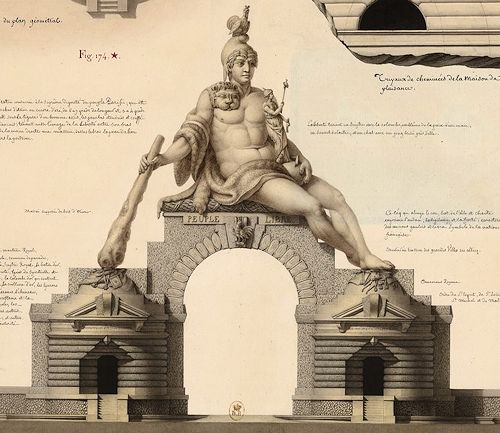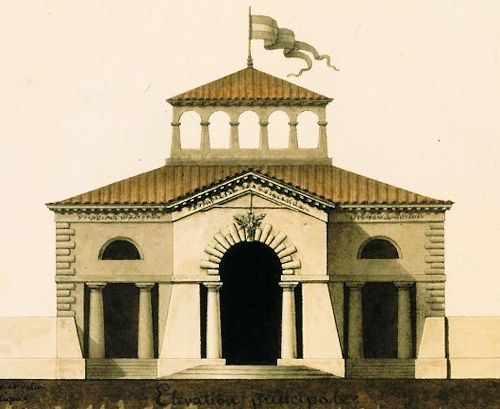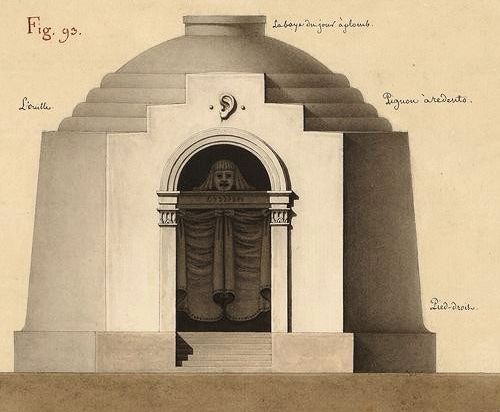LeDeuzzy, Q. |
I believe in multiple choice |
|
|
|
The desire for innovation also speaks out clearly in the Seigniorial Tribunal. | The Mausoleum of Voltaire is a polygonal pavilion approached by curiously shaped arcades. The remarks on the drawing are very specific, as was usual with our architect, though there was no need to add the explanatory words plume and globe terrestre to the neatly delineated symbols on top of the structure. But this was Lequeu: the phantastic, the imaginative artist and the pedantic cartographer. Nice inventions are the sun dial and the fountain in a niche on the sheet with the Mausoleum. | The Inn of the Enchanted Garden (Guinguette à l' . . . . . . conventional houses in many regards, but is "normal" all in all architecturally. In this particular case the comparative artistic discipline is the more astonishing as Lequeu's wild and perhaps ever unfulfilled dreams appear to have centered around Bacchus and Venus when he made this drawing. On the lower margin he lists dozens of names of wines to be put on the signs of the Inn and tells of the delights of the garden by depicting a love scene on the right margin. |
|
|
|
Toward a New Composition
| The house of the Justice of the Peace, dated an 2 de la République, shows openings out of proportion with the façade. These two drawings originated from different motives. The former was to make fun of people who had menaced the artist's life, the latter is a serious project; yet their compositional concept is identical. The unruly Lequeu, one of those who disdained the rules handed down by the generations, felt urged to discard the "regular" proportions. If these drawings were stigmatized as insane, then most of our great twentieth-century architecture would be too. The remarkable fact is that the discovery of the immense artistic possibilities in disproportionality goes back to the era of the French Revolution. | The Grotto of Cypris, |
www.quondam.com/90/9002h.htm | Quondam © 2020.01.04 |
